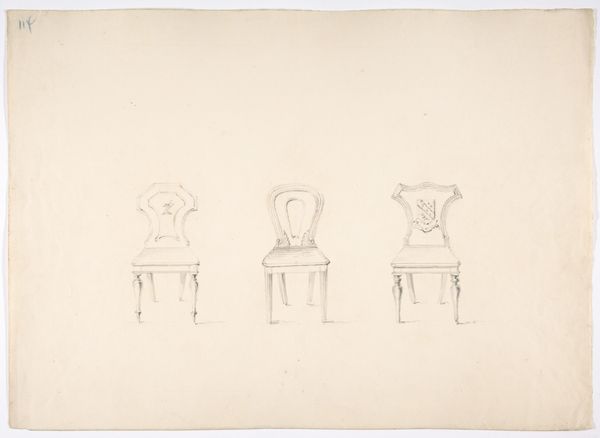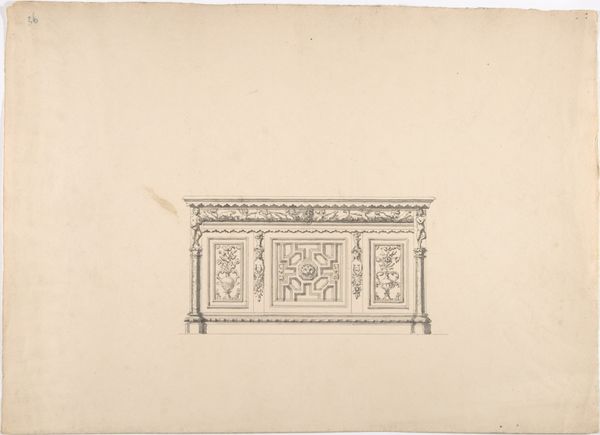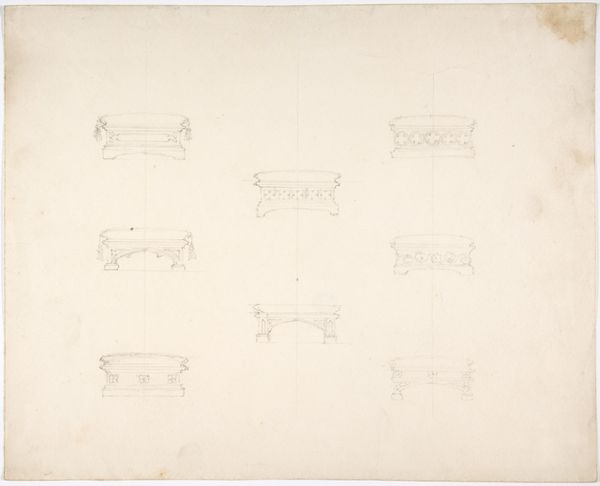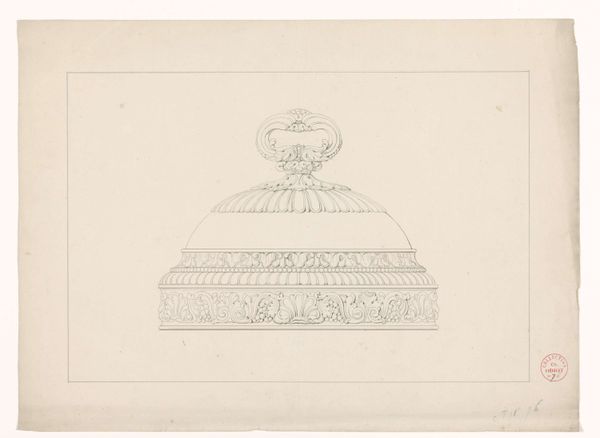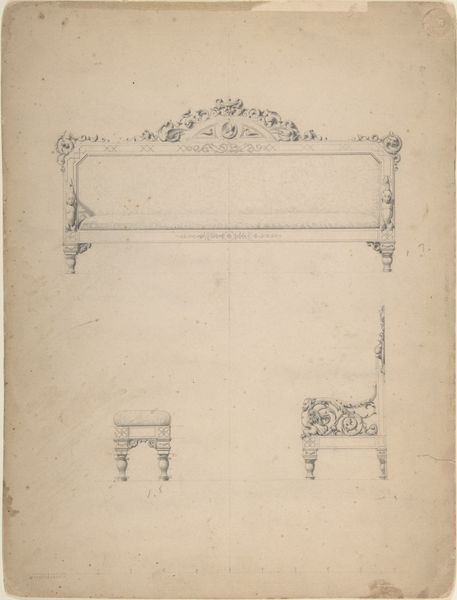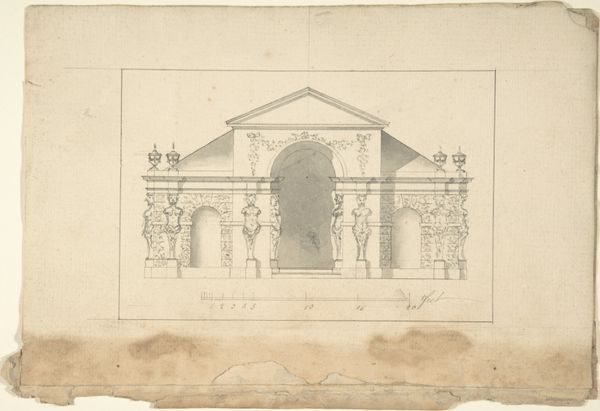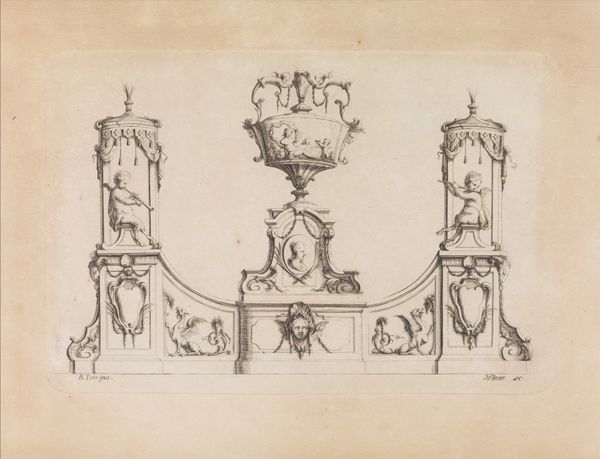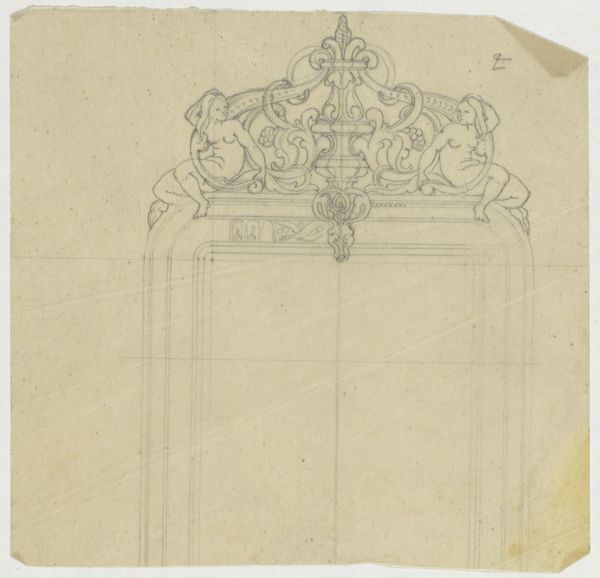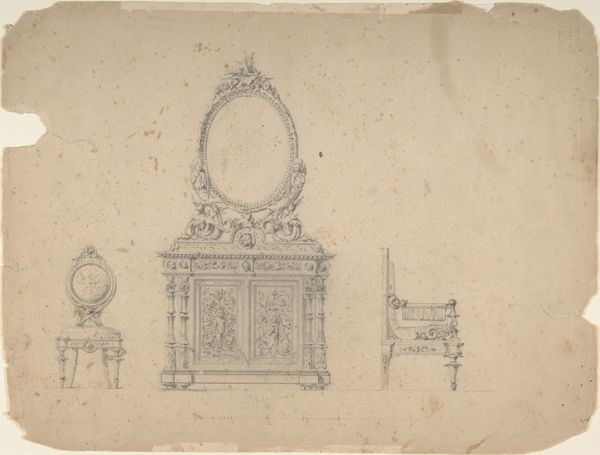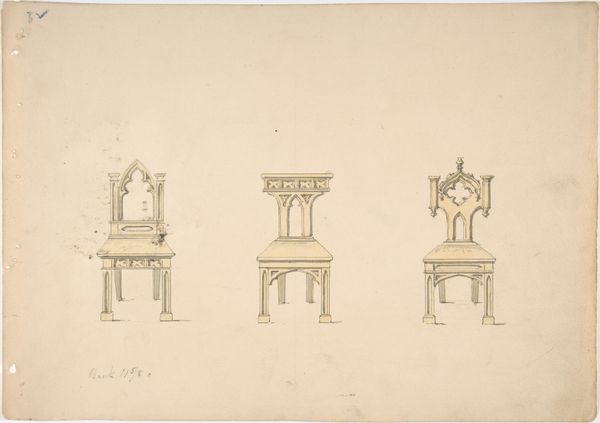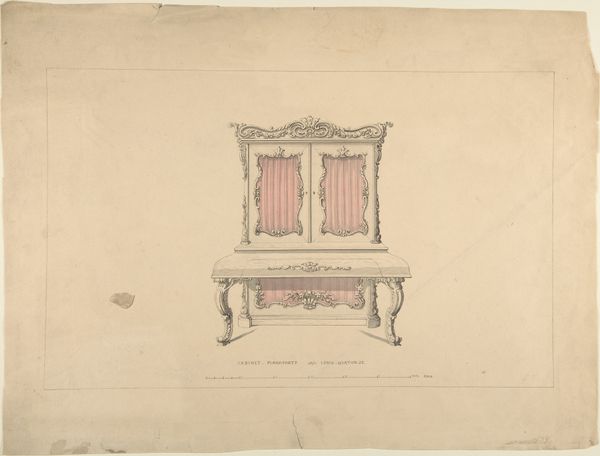
Design for Six Pedestals, Four Supporting Male Portrait Busts 1800 - 1850
0:00
0:00
drawing, print, etching, pencil
#
portrait
#
drawing
#
neoclacissism
# print
#
etching
#
etching
#
form
#
pencil
Dimensions: sheet: 10 7/8 x 15 1/16 in. (27.7 x 38.2 cm)
Copyright: Public Domain
Curator: Looking at this drawing, it seems we’re presented with “Design for Six Pedestals, Four Supporting Male Portrait Busts," likely from the early 19th century, rendered in pencil and etching by an anonymous hand. What strikes you about this piece? Editor: The arrangement is interesting—almost like a page of stamps or a catalog. They are all so similar in size and structure, it reminds me of industrial design, but the hand-done etchings look more delicate than machine-made illustrations. What materials and historical precedents inform this kind of design? Curator: From a materialist perspective, consider the conditions of production here. Etching allowed for a degree of mechanical reproduction, but each print still involved significant hand labor. This bridges the gap between mass production and artisanal craft. What does that suggest about the social value placed on these designs? Were they meant for a select clientele or a broader market? Editor: I suppose that printing would allow the design to reach more people than just a single, sculpted item. Curator: Precisely. These pedestals would then likely be constructed using varying qualities of materials depending on wealth or location. So, where does this blurring of the lines place the 'artist' in society, when the act of replication arguably lessens the preciousness associated with 'high' art? Editor: I see, it makes one think about the act of creation and the value attributed to both design and labor, especially how this particular technique facilitated a wider distribution of art-influenced architectural elements. That's fascinating! Curator: It shows how materiality and means of production impacted artistic practices in this period and asks how we evaluate artistry when something becomes reproducible and widespread. Editor: I will definitely be thinking about this concept next time I encounter these production drawings in a museum context!
Comments
No comments
Be the first to comment and join the conversation on the ultimate creative platform.
